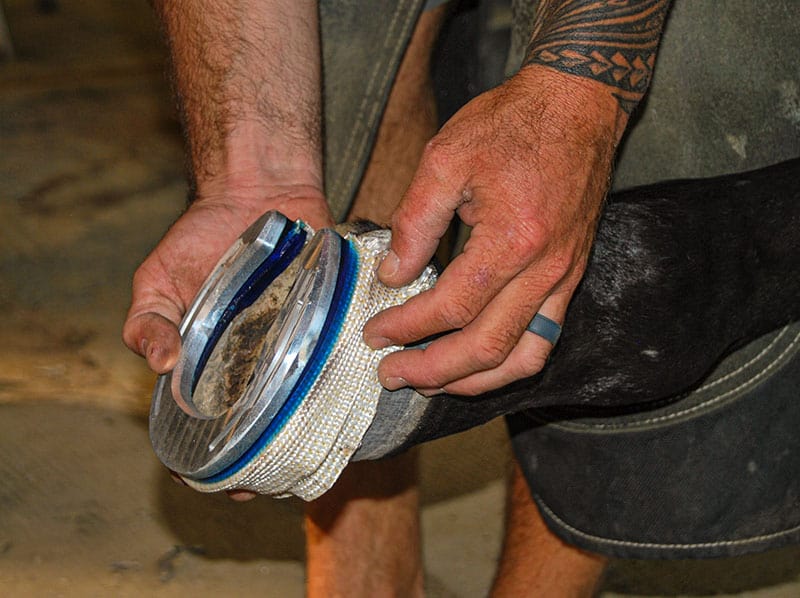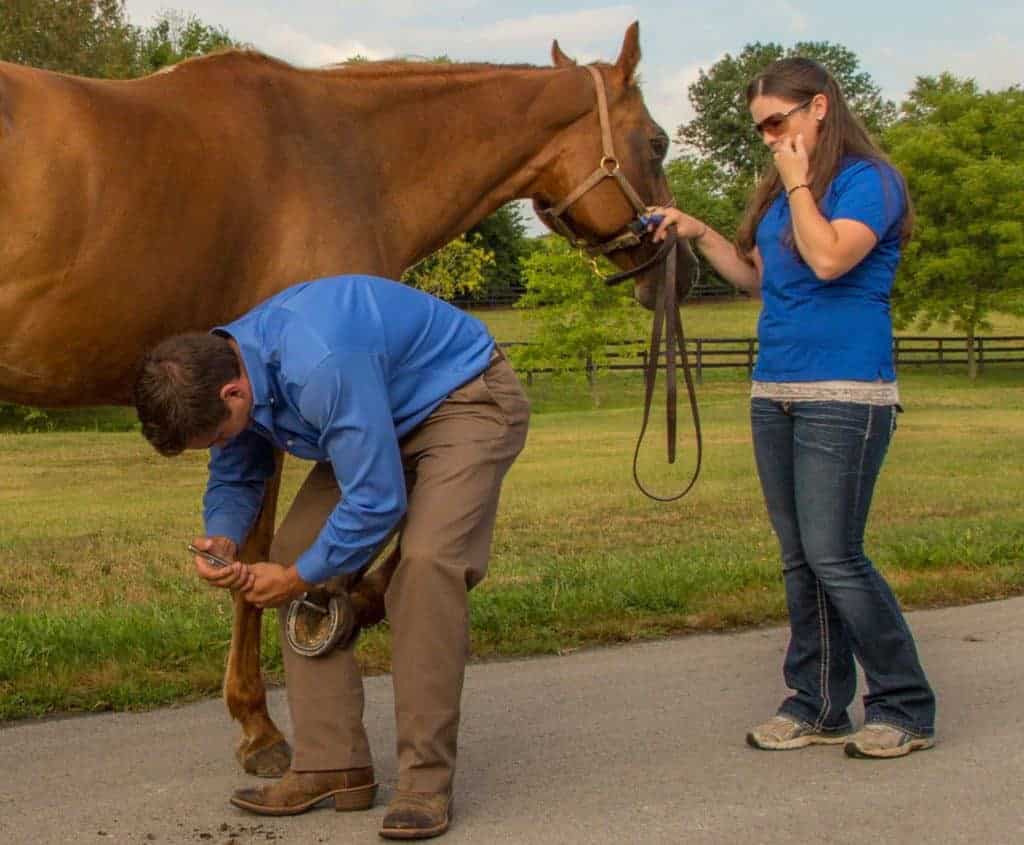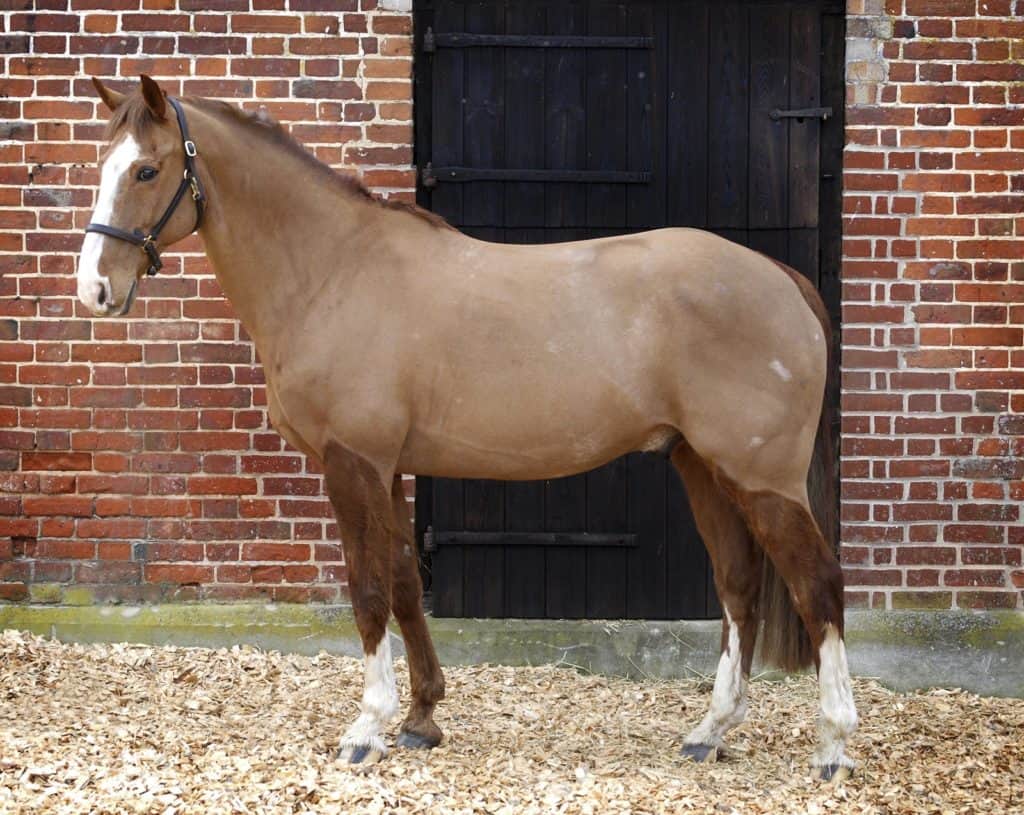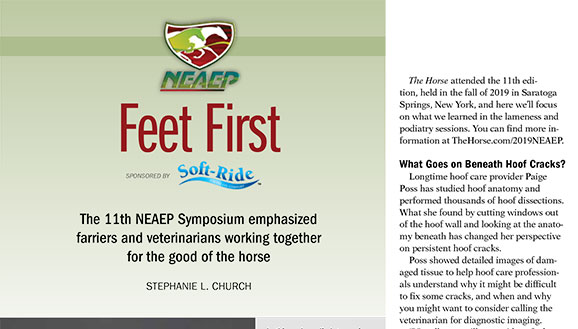
Horse Hoofwear Innovations
Today’s hoof protection options include a variety of glue-on shoes, hoof boots, and even orthotics. Learn about the pros and cons of each.

Today’s hoof protection options include a variety of glue-on shoes, hoof boots, and even orthotics. Learn about the pros and cons of each.

Lame horse? Advanced diagnostic and management strategies for navicular syndrome have improved long-term outcomes.

Researchers observed horses taking more steps and spending more time in a relaxed position after their hoof care appointments.

Does your horse have thin soles? Here’s how to manage his feet to help keep him sound.

Find out what hoof problems you can safely manage yourself and when to call in your farrier and/or veterinarian.

A nearly lost shoe should stop a rider cold because it can expose horses to foot injuries ranging from nail punctures to sole bruising. Having the right tools and knowing how to use them can help you remove a shoe safely when a farrier isn’t available.

A farrier is part of a team that also includes the horse, owner, trainer, grooms, and veterinarian. This team approach is never more necessary than when a horse has an injury or disease.

Trail riding season is in full swing, and our sources answered 17 questions about keeping your horse sound and healthy.

Your laminitis survivor’s true prognosis depends on how you manage him after the worst is over.

A team from Norway conducted a series of studies on coat type, body-clipping, and metal shoes to understand how and where horses lose body heat.

Dutch researchers are printing custom shoes, which allow for a perfect fit so farriers and veterinarians can address specific hoof issues and lamenesses.

UK researcher: Evidence-based studies are lacking; here are my experiences and shoeing strategies.

The 11th NEAEP symposium emphasized farriers and veterinarians working together for the good of the horse. Read our in-depth coverage in this free report, sponsored by Soft-Ride.

Learn how the bones and soft tissues in a horse’s hoof work together and impact soundness.

Bowker: Long toes and underrun heels set horses up for failure. Here are recommendations for an improved trim to help correct this condition.

Patrick Reilly, chief of farrier services at the University of Pennsylvania School of Veterinary Services, describes techniques for trimming navicular syndrome horses to make them more comfortable.
Stay on top of the most recent Horse Health news with
"*" indicates required fields